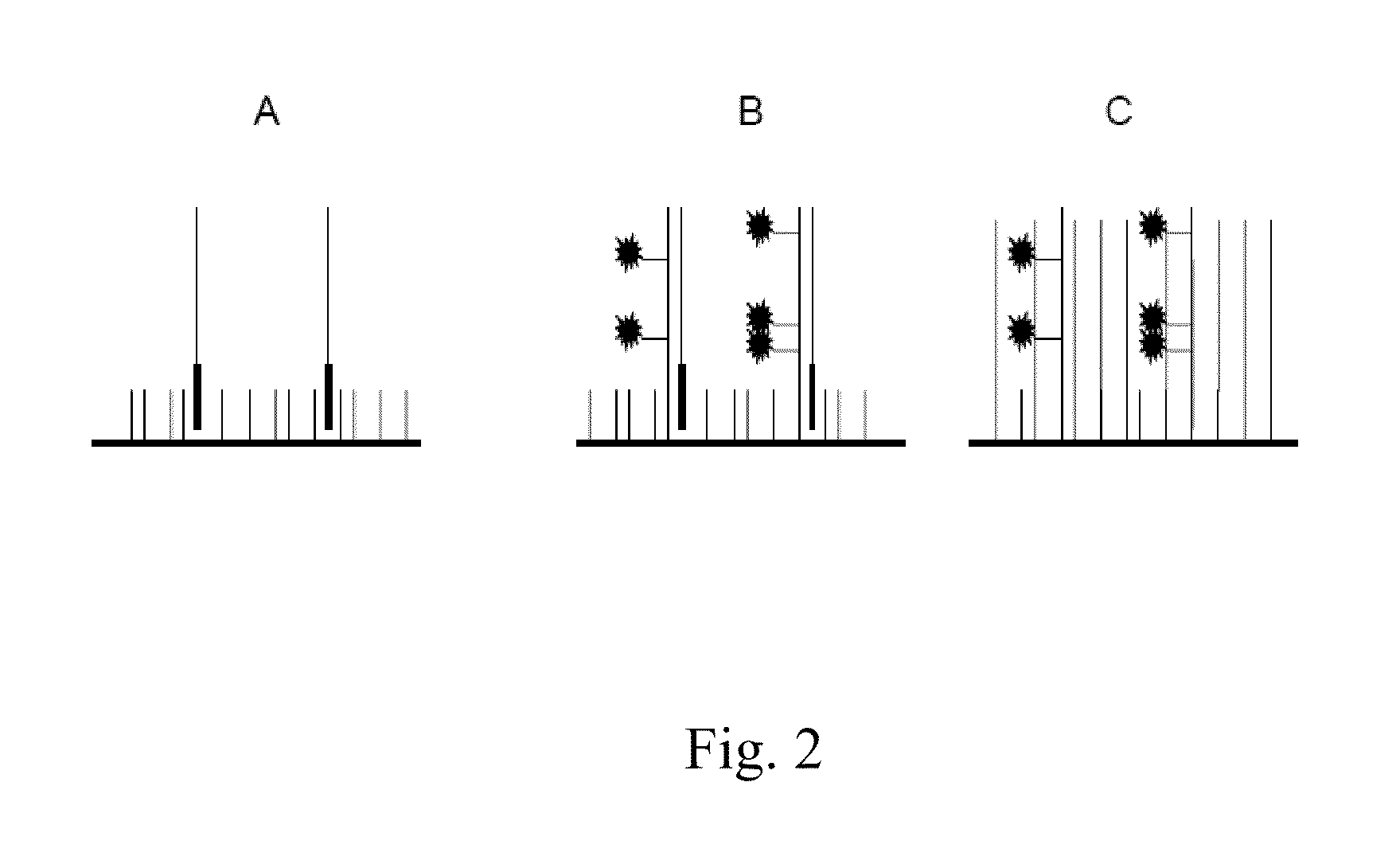Centroid markers for image analysis of high density clusters in complex polynucleotide sequencing
a polynucleotide and cluster image analysis technology, applied in chemical libraries, biochemistry apparatuses, combinational chemistry, etc., can solve the problems of inconvenient use, and inability to achieve high throughput sequencing. large scale, high throughput sequencing rate, and the above-mentioned methods are disadvantageous
- Summary
- Abstract
- Description
- Claims
- Application Information
AI Technical Summary
Benefits of technology
Problems solved by technology
Method used
Image
Examples
Embodiment Construction
[0034]The present invention is directed in certain embodiments as described herein to a solid-phase immobilized nucleic acid cluster having an identifiable center, to methods for producing such a nucleic acid cluster, and to a method for annotating a center position in such a cluster. These and related embodiments will find uses in improving the quality and quantity of nucleic acid sequence information that can be obtained from a nucleic acid sample such as a nucleic acid template or its complement as described herein, for instance, a DNA or RNA polynucleotide or other nucleic acid sample. Accordingly, certain embodiments as disclosed herein may provide higher throughput polynucleotide sequencing, for instance, higher rates of collection of DNA or RNA sequence data, greater efficiency in sequence data collection, and / or lower costs of obtaining such sequence data, relative to previously available methodologies.
[0035]Certain embodiments as disclosed herein for the first time are base...
PUM
| Property | Measurement | Unit |
|---|---|---|
| diameter | aaaaa | aaaaa |
| diameter | aaaaa | aaaaa |
| diameter | aaaaa | aaaaa |
Abstract
Description
Claims
Application Information
 Login to View More
Login to View More - R&D
- Intellectual Property
- Life Sciences
- Materials
- Tech Scout
- Unparalleled Data Quality
- Higher Quality Content
- 60% Fewer Hallucinations
Browse by: Latest US Patents, China's latest patents, Technical Efficacy Thesaurus, Application Domain, Technology Topic, Popular Technical Reports.
© 2025 PatSnap. All rights reserved.Legal|Privacy policy|Modern Slavery Act Transparency Statement|Sitemap|About US| Contact US: help@patsnap.com



